Mining’s Energy Challenge: The Case for Geothermal
With the world focusing on the energy transition to net zero carbon emissions, governments are setting legally binding targets for the uptake of renewable energy and carbon neutral technologies at an unprecedented pace. To support the political and public shift in energy use, the demand for raw materials associated with these new technologies is projected to soar. Each of the technologies shown in the figure below have their place in the energy transition. Projections show we will see an increase in demand across all of the raw materials listed (plus a few others not shown).
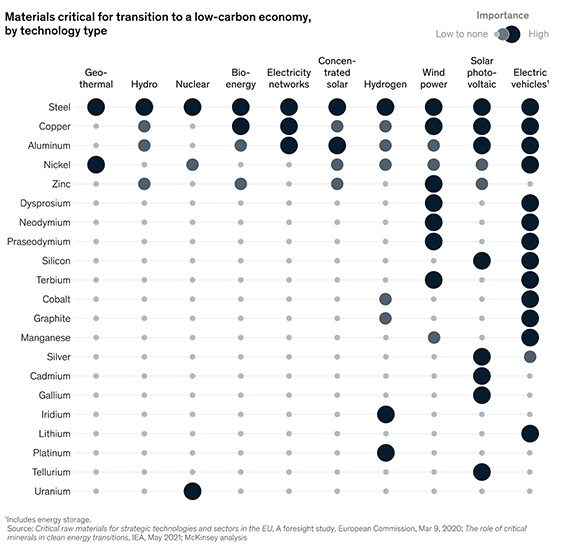
According to the World Bank Group and Ecofys, to support this increased production demand, the mining industry will increase its energy demands by 36% by 2035. The electricity portion of this demand is set to increase at an even faster rate as more mines adopt automation and electrification of operations.
The mining industry is already a large energy consumer, accounting for almost 11% of the world’s power consumption. This energy demand leaves the industry vulnerable to power availability and fluctuating energy prices across the globe.
Whilst trying to navigate these challenges, the industry must also respond to increasing pressure from stakeholders such as communities, governments, and end users to improve their environmental and social performance. This can be attributed to a worldwide focus on climate change and the energy transition ahead. Consumers are becoming conscious of where goods originate and the carbon footprint associated with their lifecycle, with investors prioritising sustainable projects.
Therefore, new investments in low-carbon energy services are paramount to survival.
With so many energy-generation options available, how do decision makers choose the right approach for their operation? The renewable sources that usually come to mind first are wind and solar. While having significant benefits, they are sometimes not the best match for the mining industry due to their intermittent availability (with most mines requiring a consistent load). Large-scale storage is required to ensure these technologies meet baseload demands of the industry, which often comes with a significant price tag.
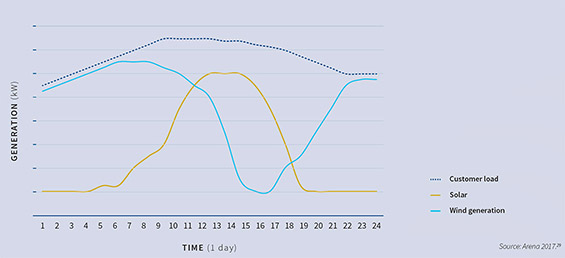
If two of the renewable energy industry’s biggest players are not ideal, then what is? Geothermal could be the option the industry is needing. With its 24/7 availability, and the potential to provide both electrical generation and heat energy for operations, geothermal appears to be the optimal partner for the mining industry in its pursuit of adopting a “green” future.
But if geothermal energy is such a good match for the mining industry, then the real question is why haven’t we seen more examples of geothermal developments in the industry to date? There are a few opinions out there, but one common theme seems to be that general awareness and the proven potential of this technology is not as widely understood compared to others such as wind and solar. Geothermal is therefore overlooked or dismissed without much consideration by companies actively looking at investments in their energy infrastructure.
That said, nearly 16,000 MWe of geothermal energy are currently online worldwide. The technology has seen an upswell of investment and innovative start-ups looking to leverage the energy transition wave. Where feasible, geothermal solutions can help address the energy demands from the mining sector and should be a serious consideration for decision makers moving forward.
The Reality
We have seen examples of smelters being shut-down, or curtailed around the world due to energy demand issues, such as Alcoa’s San Ciprian smelter in Spain. The smelter is being curtailed for two years due to “exorbitant energy prices”. Another example is the shutdown of the KAP smelter in Montenegro in December again due to a significant jump in energy prices. Similarly, before electricity price renegotiations with Meridian and Contact Energy in New Zealand in 2021, Rio Tinto considered closing New Zealand Aluminium Smelters (NZAS) at Tiwai Point on the South Island due to power pricing. NZAS is the largest consumer of the country’s power (13%). Ironically, New Zealand also ranks 5th in the world with geothermal electricity online, however, all of the commercial geothermal production is on the northern island.
The reality is, with numerous plants around the world experiencing similar problems and curtailing or shutting down operations, raw material prices continue to climb.
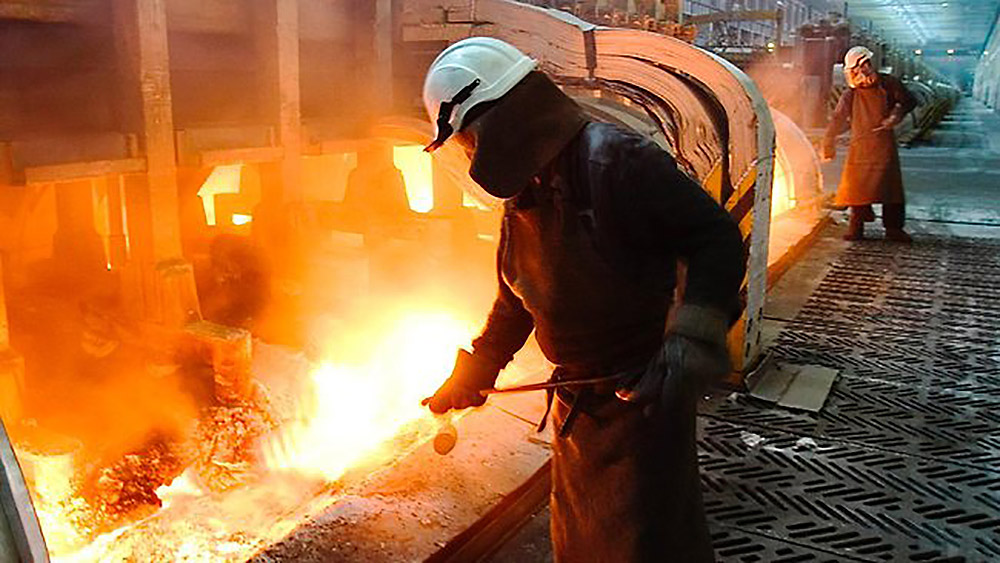
One way of mitigating these vulnerabilities is for mining companies to secure power from a renewable energy source that is less susceptible to price fluctuations. This is how Alcoa are planning to return the San Ciprian smelter to full capacity by 2024 under renewable power contracts. They are not alone, with most major mining companies such as Glencore, BHP, Rio Tinto, Fortescue and many others investing heavily into renewable energy projects across the globe.
According to Deloitte, “Miners have the opportunity to drive down energy costs by up to 25% in existing operations, and 50% in greenfield mines through an effective energy management program, of which renewables are a major component. In addition to cost savings, the ability to reduce emissions and preserve the mine’s social license to operate increases the size of the prize even more.”
Benefits of Geothermal in Mining operations
Geothermal energy can provide 24/7 electricity generation and high-temperature heat for many mining applications. In addition to providing energy security, clean, sustainable energy sources such as geothermal have a strong financial incentive.
Properties that are rich in minerals sought by the mining industry tend to coincide with areas suitable for geothermal development. Studies show that high-temperature geothermal reservoirs required for producing geothermal energy correlate to high concentrations of minerals formed by hydrothermal alteration such as silver, copper and gold. This relationship increases the likelihood of a geothermal development being feasible in most precious metal mining areas.
A prime example is the Lihir Gold Mine in Papua New Guinea where a series of prospecting wells identified geothermal reservoirs ranging from 240 to 300°C. These resources were used to develop a 6MW geothermal power plant in 2003, resulting in savings of ~US$200,000 /month. Today, the plant’s capacity is 56 MW, providing ~75% of the mining operation’s power needs and ~US$40 million in savings from offsetting heavy fuel oil consumption.
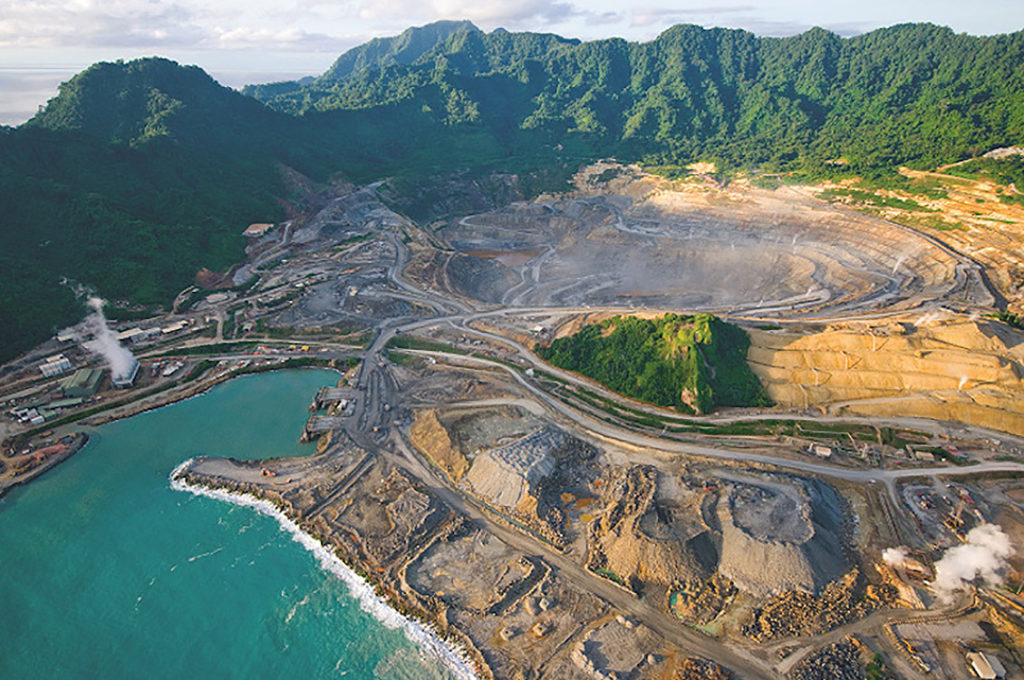
These savings were felt directly by the client, Newcrest Mining, but also indirectly by gaining local community support with the utilization of renewable energy. Beyond these financial benefits, the use of geothermal provided Newcrest Mining with a high level of energy independence, more flexibility in their mine’s operations, less cumbersome power purchase agreements, and relatively consistent energy OPEX.
This geothermal system can be emulated in other volcanic regions all over the world. Another mining sector company that has targeted this opportunity is Fortescue Metals Group (FMG). FMG, under their sister company Fortescue Future Industries, have signed an agreement with the State of Papua New Guinea to carry out feasibility studies on 11 geothermal energy projects in PNG and other surrounding areas. Although it is publicised that the energy is intended for green hydrogen and green ammonia production, there is every likelihood that it will be used for mining projects as well.
Outside of power generation, geothermal has many direct use applications for mining such as enhancing heap leaching, desalination, and space heating/cooling. The chance to harvest energy contained within the earth directly below existing mining operations has immense potential but is seldom taken advantage.
Exploring Geothermal Energy Potential
In many cases, the exploration phase for mining and geothermal are similar. Both involve surface studies coupled with the drilling of exploration wells, often to depths of 2-3,000 m, to analyse the geology and geoscientific characteristics. So, by re-analysing or dual purposing mining exploration efforts, the technical feasibility of geothermal potential can be determined with relatively minimal additional financial contribution.
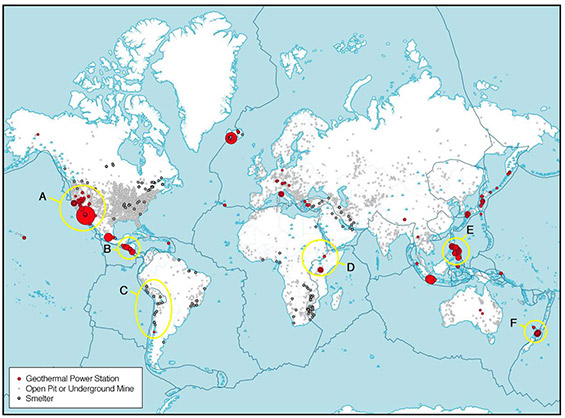
The first step in considering geothermal energy as a potential investment to provide low-carbon energy is to conduct a feasibility study. This will examine the resource potential in an area, and the business case for an installation. A feasibility study includes creating a desktop model of the geothermal resource as well as estimating resource potential and electricity demand. The feasibility stage of any project is vital as it provides decision makers with the information needed to assess whether the proposed solution(s) are appropriate for the business. Information provided at this stage can be used to gain financial support and to push a project onwards to design, procurement and installation. Given the importance of the feasibility study, any businesses seeking informed decision making should ensure that a highly experienced team of professionals are selected to perform the task.
The mining industry is poised for substantial growth in the coming years, and it is clear that to achieve this growth, leaders within the industry will need to adapt to the ever-changing political, environmental and social circumstances around the world. Geothermal energy may not be the only answer to the mining industry’s future energy challenges, but it should definitely be considered when exploring energy independence and carbon neutral initiatives.
JRG Energy is a renewable energy, project management, engineering consulting firm with an extensive geothermal portfolio.
Learn more about how JRG Energy can help mining operations around the world identify, explore and produce geothermal energy to decrease the reliance of unstable power pricing, enhance your ESG status, and improve your bottom line.
https://www.jrgenergy.com/geothermal-solutions-for-mining
JRG ENERGY Overview Video
Contact us at info@jrgenergy.com

2 Comments
Rolando P Espinoza
Excelent article. Geothermal energy if feasibly for a psrticular project or mining region is the secure source needed in soustainable mining
Christina Dian Parmionova
Geothermal is destined to play a large role in the world’s clean energy future.